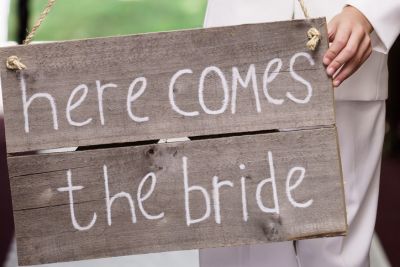 If you've attended a few weddings, you might have heard the familiar “Bridal Chorus,” otherwise known as “Here Comes the Bride” or the “Bridal March,” played during the processional. You might not know this popular tune’s backstory, which is both fascinating and troubling by turns. Its engaging tale will take you from its roots in German musical and literary history, through British royal trendsetting and all the way to continued controversy over its usage in modern times.
If you've attended a few weddings, you might have heard the familiar “Bridal Chorus,” otherwise known as “Here Comes the Bride” or the “Bridal March,” played during the processional. You might not know this popular tune’s backstory, which is both fascinating and troubling by turns. Its engaging tale will take you from its roots in German musical and literary history, through British royal trendsetting and all the way to continued controversy over its usage in modern times.
Where Did the “Bridal Chorus” Originate?
The song's origins come from the Richard Wagner opera "Lohengrin.” Its first production occurred in 1850 when it was staged in the German city of Weimar under the direction of Hungarian musician and composer Franz Liszt. It was performed across Europe throughout the 1850s and 1860s before making its American debut in New York City on April 3, 1871.
To write the opera’s storyline, Wagner expanded on an already existing character who appeared in “Parzival,” an epic poem composed by medieval German writer Wolfram von Eschenbach. According to von Eschenbach’s account, Lohengrin was Parzival’s son and a Knight of the Holy Grail charged with protecting a duchess. He agreed to do so, under the condition that she must never ask for his name. Wagner explored the possibility of what would happen if Lohengrin was required to reveal his identity, crafting it into a tragic tale.
The infamous “Bridal Chorus” appears at the beginning of Act Three, shortly before his new bride Elsa starts cajoling him into disclosing his true name. Her female wedding party members sing the original German lyrics to this song as they escort the newlywed couple to their bridal chambers. A few moments after Elsa asks Lohengrin the fated question, Lohengrin’s rival Telramund intrudes, forcing the knight to defend himself by killing the interloper. These events compel him to divulge the truth and leave a heartbroken Elsa behind. Soon after his exit, Elsa dies of grief.
How Did It Become a Popular Processional Song?
Just as the British queen Victoria caused the trend of white wedding dresses to take off, it was ironically her daughter who made Wagner’s “Bridal Chorus” a popular processional tune. According to Elizabeth Hafkin Pleck’s book “Celebrating the Family: Ethnicity, Consumer Culture, and Family Rituals,” Princess Victoria caused the song to become famous by its inclusion in her 1858 wedding to the future German Emperor Frederick III.
Why Is the Song So Controversial?
Although trendsetting by British nobility made "Bridal Chorus" a top-rated choice, some look askance at its inclusion in wedding ceremonial music even today. This is mostly true within the Roman Catholic Church or conservative-leaning Christian denominations such as the Lutheran Missouri Synod. They usually ban its use for a few key reasons:
- The tune itself comes from a secular work
- Its original context in “Lohengrin” does not include a processional to the altar
- Wagnerian operas tend to incorporate “pagan” elements
However, it is Wagner's darker ideologies that lead some couples to eschew the song. Besides the tragic events that follow its appearance in “Lohengrin,” the composer was also known for his anti-Semitic views. The Jewish Virtual Library mentioned some of his more troubling assertions, including ideas that Jewish people lacked artistic passion and the ability for intricate, sophisticated musical expression. Additionally, Wagner was later hailed by Nazi ideologies as an example of “Aryan cultural greatness.” For those reasons, most Jewish couples do not play “Bridal Chorus” in their ceremonies.
A Complex and Disconcerting History****
Examining common traditions can lead to unique findings along with the uncovering of less savory truths. The place of Wagner’s “Bridal Chorus” within modern wedding music is just one such example of these types of discoveries. As you plan your special day, your values and aesthetics will dictate what you include and what you'll decide to forgo.
Add Your Comment